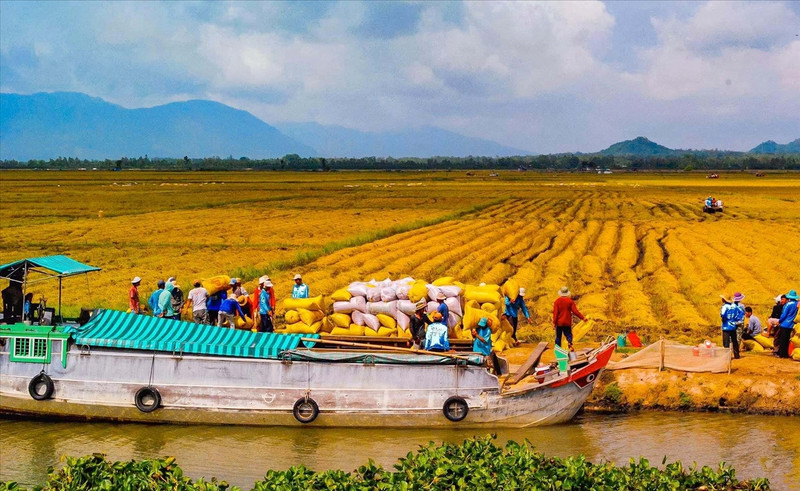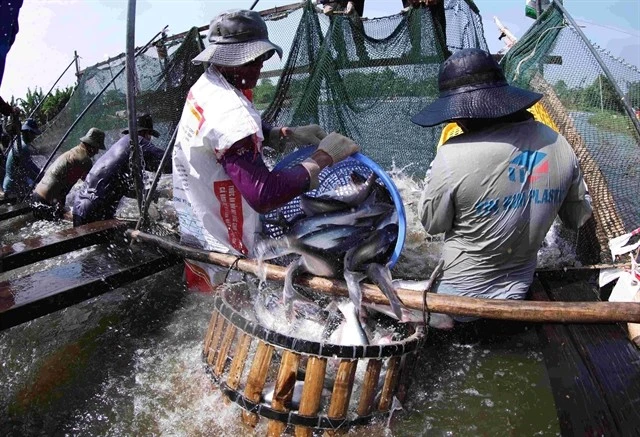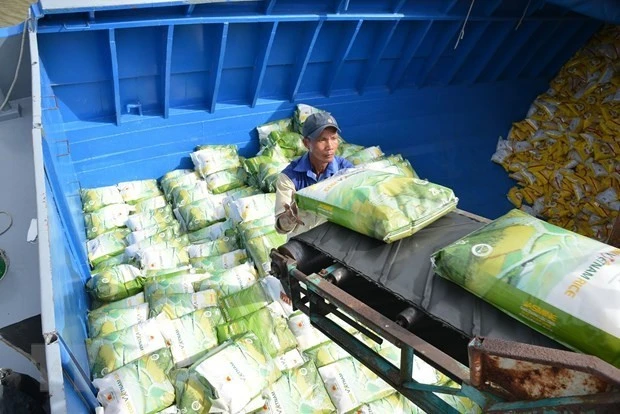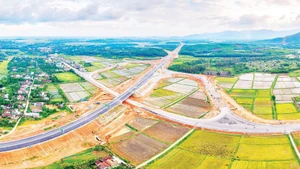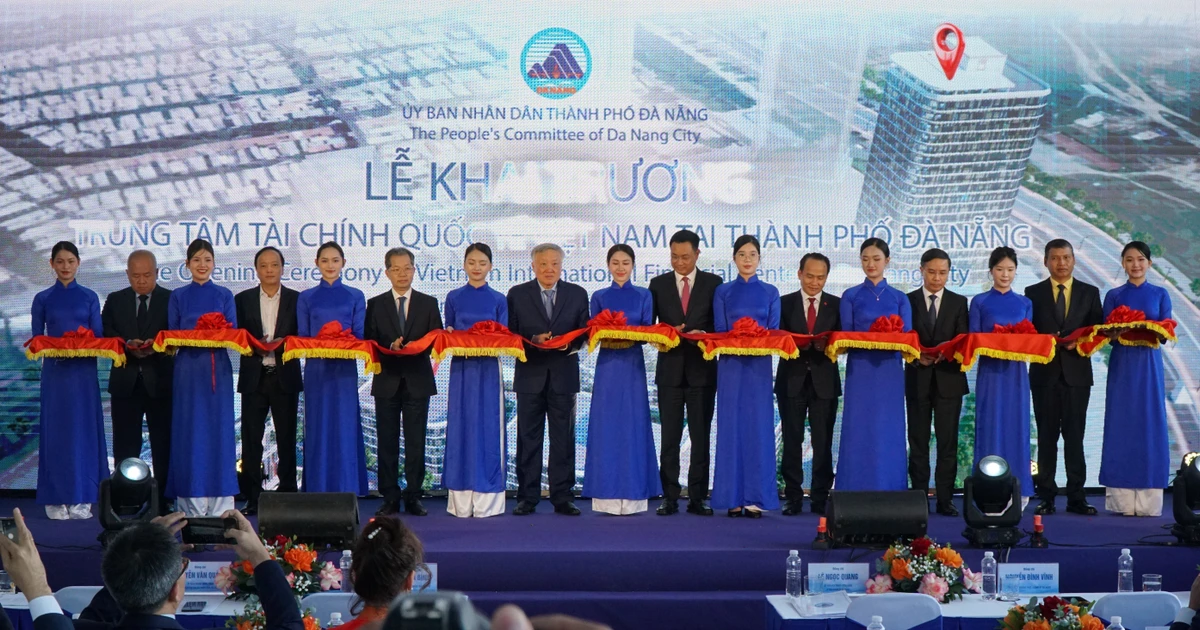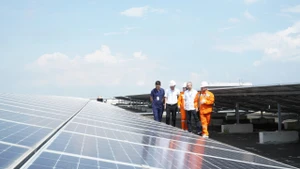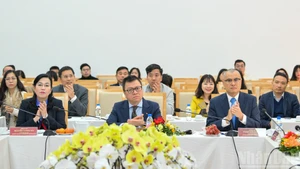The Mekong Delta is the largest producer of rice, seafood, and fruit in Vietnam and has contributed greatly to the country’s economic development. Every year, this region has brought in great export revenue for the agriculture sector.
Green economic development remains main direction
At a conference to promote the implementation of Resolution No. 13/NQ-TW on orientations for socio-economic development and defence - security safeguarding in the Mekong Delta until 2030, with a vision to 2045, Party General Secretary Nguyen Phu Trong asked the central agencies to well organise the development planning of the region in the 2021-2030 period, with a vision to 2045 in the direction of green, sustainable and comprehensive development.
The regional planning is required to be in line with the national master plan, ensuring multi-sector integration and the linkage between agricultural development and industrial and service development, and between urban development and new-style rural area building.
Based on this direction, localities in the Mekong Delta have geared economic development policies towards achieving green, sustainable economic development goals, and captalising on existing advantages of each locality.
According to representatives of Can Tho city, the locality aims to become an ecological, civilised, and modern city imbued with river cultural identity of the Mekong Delta, which will also serve as a regional hub of commercial services, tourism, logistics, modern processing industry, hi-tech agriculture, education and training, specialised healthcare, science and technology, culture, and sports.
Dong Thap province considers "green economy" as the main direction for developing the locality’s industries, aiming to reduce emissions, protect the environment, and promote sustainable development.
Pham Thien Nghia, Chairman of the People’s Committee of Dong Thap province said the locality is calling for investment in the agricultural field, focusing on five key sectors of high-tech agriculture, mechanical industry serving agriculture, tourism, agriculture mechanization, and processing and manufacturing.
Kien Giang, one of the regional localities that have the largest rice production area in the country, also identifies green economy as the key direction in its economic development plan in 2021 - 2030, with a vision to 2045.
From now until 2030, the province will focus on developing sustainable aquaculture suitable for each ecological region; proactively adapting to climate change, saline intrusion, and rising sea level; and increasing productivity, output, quality, and value of products through appropriately organising production and applying advanced technologies to the entire value chain of products.
The aquaculture industry is expected to become a crucial contributor to the locality’s agricultural growth and socio-economic development.
Improving competitiveness of regional products
Green economic development has become the foundation for forming green agriculture in the Mekong Delta, and is also a prerequisite for the region’s sectors to increase their competitiveness in the international market. To achieve this, each sector and each product must establish its image and prestige on the market.
Therefore, building brands for each product is the first and most important step to improve the competitiveness of products.
According to Tran Giang Khe from the Representative Office of the Ministry of Science and Technology’s Intellectual Property Office, registering intellectual property rights and building brands can help increase the competitiveness and value of local specialties.
Phu Quoc fish sauce has been registered geographical indication in 28 member countries of the European Union (EU).
After obtaining geographical indication (GI) certification in Vietnam, Hoa Loc mangoes (Tien Giang province) have been exported to Japan, the Republic of Korea, Canada, and other countries.
Meanwhile, the price of Lo Ren Vinh Kim star apple from Tien Giang province increased by 20% since the product has been granted a collective trademark.
According to Director of the Department of Science and Technology of Ca Mau province Phan Tuan Thanh, the programme to protect and develop local specialties has contributed to improving the quality and competitiveness of local products.
Ca Mau has built brand names for 26 specialty products through collective trademark certificates and certification of origin and GI, such as U Minh Ha honey, U Minh dried bream, Rach Goc dried shrimp, Nam Can and Ca Mau crabs, Thoi Binh fish sauce, among others.
In Ben Tre province, in 2018-2022, the provincial Department of Science and Technology supported, consulted and guided over 280 individuals and organizations to make dossiers for registering intellectual property rights.
Training courses were organised to provide knowledge and raise public awareness of the benefit of trademark registration for local specialties, and tourism development.
During 2018-2022, the National Office of Intellectual Property of Vietnam received over 9,800 intellectual property applications from the Mekong Delta and issued more than 5,800 certificates for trademarks and certificates of origin for products in the region.
Cities and provinces in the region have issued a number of documents related to the management of intellectual property assets, origin certificates, trademarks, support for registration of protection, and development of collective trademarks for several key products in the region such as Ben Tre green skin pomelo, Ben Tre green coconut, Cao Lanh mango (Dong Thap), Ca Mau lobster and crab, Phu Quoc fish sauce, Hong Dan red dust rice (Bac Lieu), Cau Duc bamboo shoot (Hau Giang), among others.
Thanks to great efforts, agricultural products in the Mekong Delta region gradually affirm their position in international markets and increase their competitiveness with similar products in the international arena.
